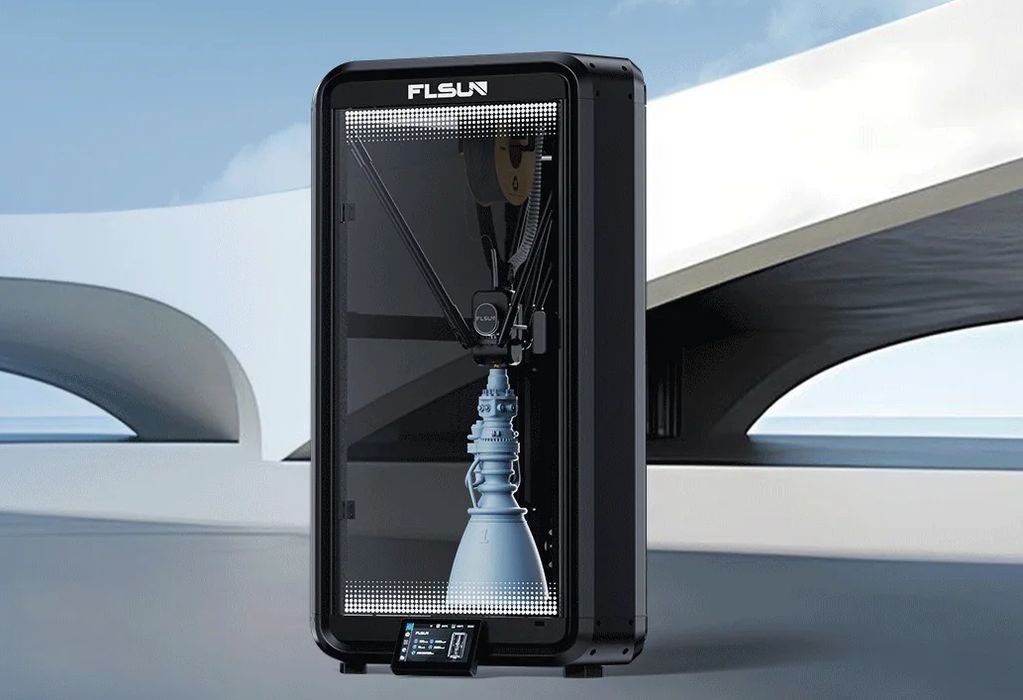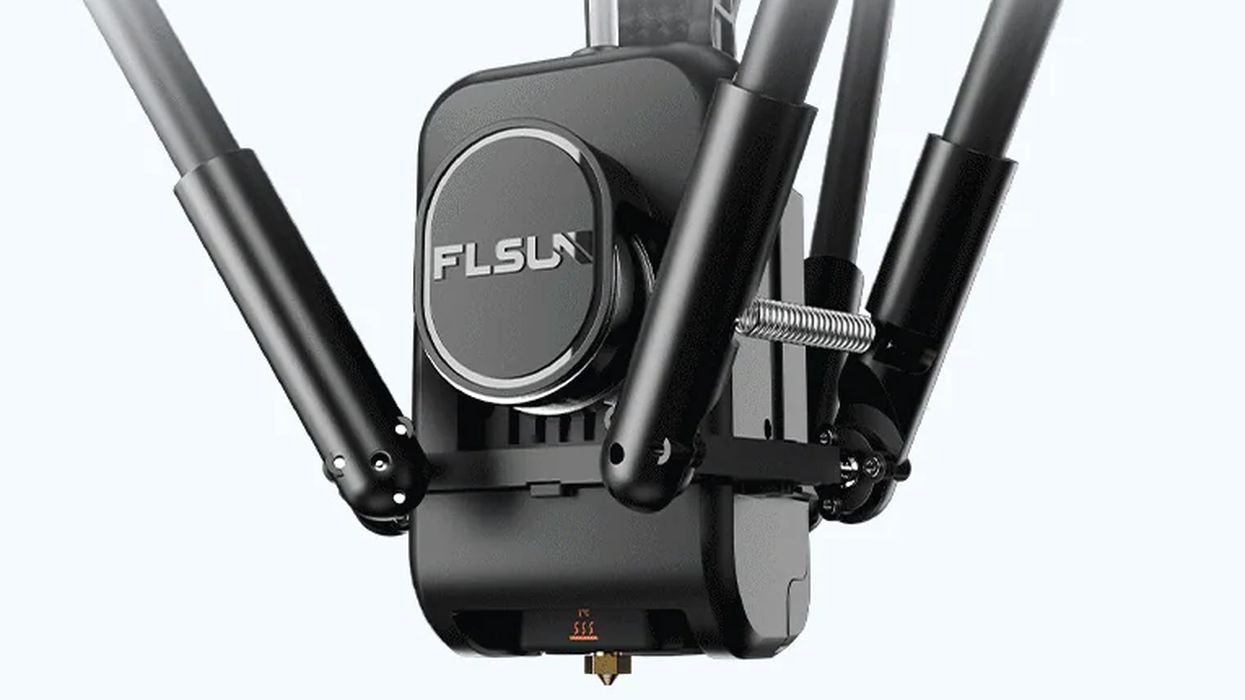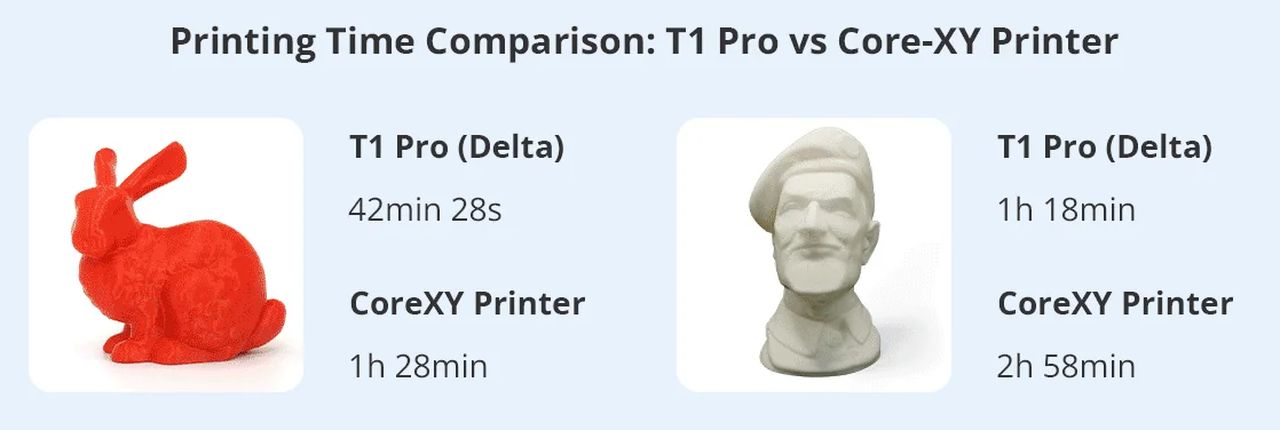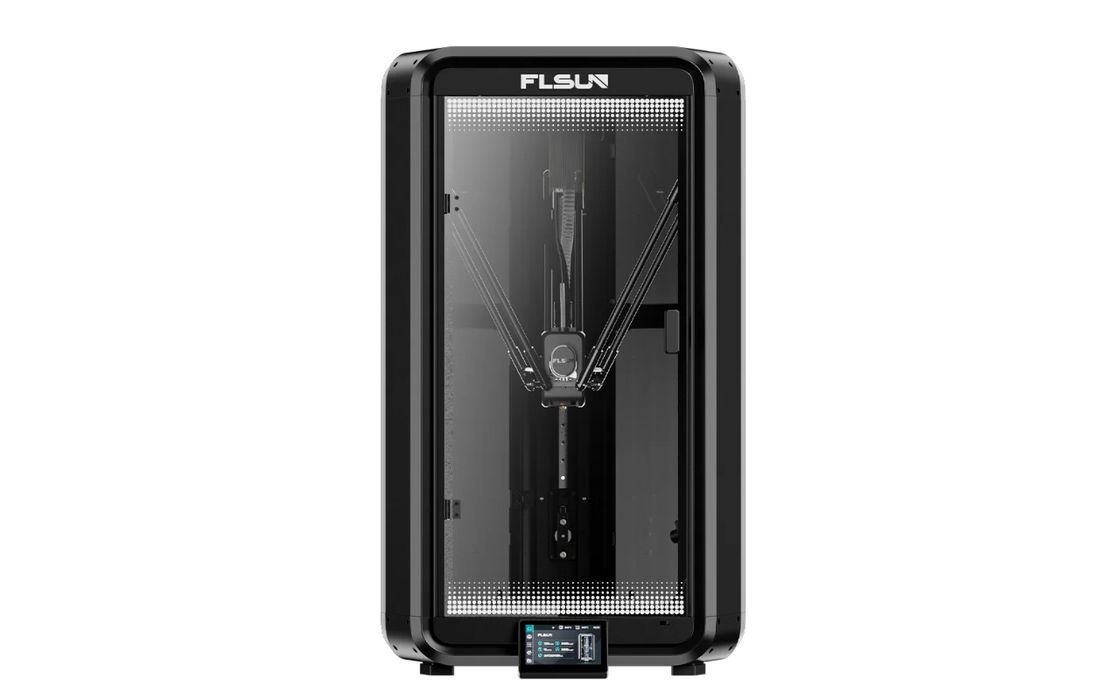SPONSORED CONTENT

FLSUN has released a new and economical ultra high speed 3D printer that seems to beat its competitors.
The new machine is the FLSUN T1 Pro, the successor to the well-regarded FLSU T1. The T1 Pro inherits most of the features and specifications of the T1.
It’s a delta machine, unlike the competitors in the high speed desktop 3D printer market, which use a CoreXY motion system design. The delta system allows for very rapid and precise movement, ideal for high speed 3D printing. This is doubly so because a delta motion system does not move the print plate: bedslingers do this, and that generates wobbles in the print due to this motion.

How fast is the T1 Pro? Well, it’s one of the fastest 3D printers on the market, with the only faster device being FLSUN’s own S1. The T1 Pro is rated for printing at a whopping 1000mm/s, with an acceleration of 30,000mm/s/s. This isn’t just how fast the toolhead can move; it can really print that fast because it has a maximum volumetric flow rate of an incredible 90 cubic mm/s.
It might be useful to compare the T1 Pro against the competing devices in this category, which FLSUN lists as the Bambu Lab P1S and Creality K1 SE. Here is a comparison chart of the speeds and feeds for these 3D printers:
| FLSUN T1 | Bambu Lab P1S | Creality K1 SE | |
| Maximum Print Speed | 1000 | 500 | 600 |
| Acceleration | 30000 | 20000 | 20000 |
| Maximum Flow Rate | 90 | 32 | 32 |
What’s most interesting is the maximum volumetric flow rate, which is the amount of material that can be delivered each second. The higher that rate, the faster the machine can print — as long as it move quickly enough. Of course, the T1 Pro can move fast — very fast.

FLSUN explains the effect of the high speed capability:
”It can print a model like a small boat (#3DBenchy) in just 10:45 seconds, whereas the Creality K1 SE and Bambu Lab P1P take around 15 to 20 minutes, with their maximum speeds of 600mm/s and 500mm/s respectively, and both acceleration of 20000 mm/s². This remarkable speed is supported by the T1 Pro’s innovative 78N dual-gear direct-drive extruder and a high-flow hotend capable of 90mm³/s, along with optimized high-speed algorithms.“
Aside from speed, there are some differences in build volume between these three machines. Let’s compare with this chart, and note that the delta system of the T1 Pro is a cylindrical build volume, while the others are cartesian:
| X (or D) | Y (or H) | Z | Total Volume (L) | |
| FLSUN T1 | 260 | 330 | N/A | 17.5 |
| Bambu Lab P1S | 256 | 256 | 256 | 16.8 |
| Creality K1 SE | 220 | 220 | 250 | 12.1 |
The delta style offers a big bigger build volume, but more importantly, it’s a lot taller than the competitors, which makes printing large figurines or longer parts much easier.
One of the interesting innovations on the T1 Pro, which also exists on the higher level S1, is the advanced cooling system. FLSUN has included a CPAP-style fan system that generates a massive amount of cooling. This is required for ultra-high speed 3D printing to ensure layers are fully solid before proceeding to the next layer. In spite of this massive cooling system, FLSUN rates the audio noise level at a mere 52-62 dB, quieter than talking with your friends.

The T1 Pro offers a number of convenience features, including a 4.3” color touchscreen (not offered on the P1S), fully automated calibration, onboard realtime camera monitoring with timelapse videos, filament out detection, power loss recovery and automated sleep. What’s automated sleep? It’s a timer function that triggers a automated stop if the machine is left idle at operating temperatures for longer than ten minutes.
Perhaps the most amazing feature of the T1 Pro is its launch pricing: this advanced ultra-high speed 3D printer can be purchased for only US$399, a substantial discount over the eventual retail price of US$599.
Via FLSUN
